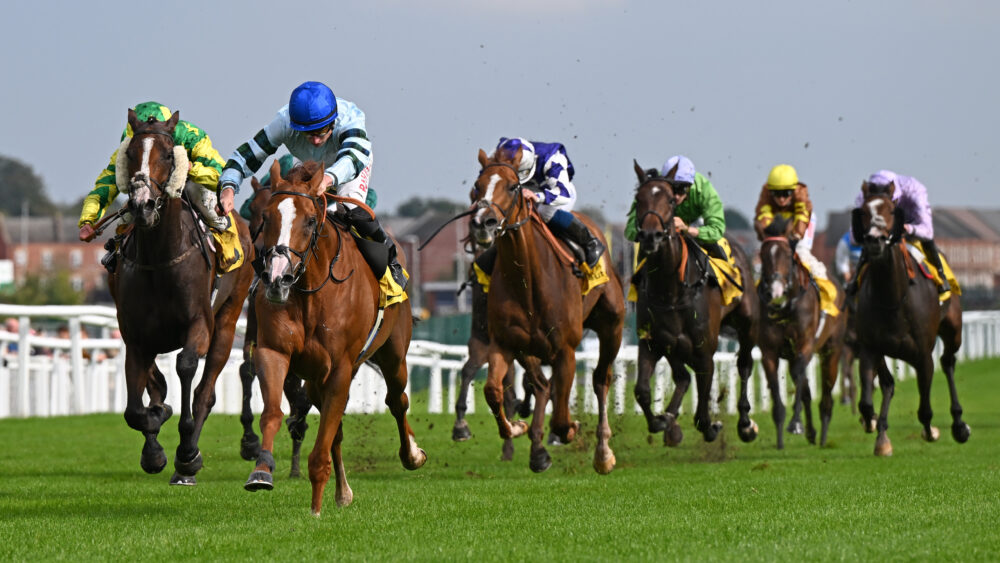Racing Report: September 2024

In this blog, Richard Wayman, BHA Director of Racing, analyses some of the key trends within our latest monthly data pack
Our latest racing data report is available, covering the first nine months of 2024. Now that we have reached the end of Q3, the general trends that we are seeing this year are, in most cases, becoming increasingly clear.
Beginning with some good news, it is pleasing to see that our different measures of race competitiveness are heading in the right direction. Average field sizes, percentage of races with at least 8 runners, and percentage of races with an odds-against favourite are all improving this year. That has been achieved through a variety of interventions including a reduction in Jump races, the movement of Flat races out of the summer into other periods of the year and a multitude of changes to the race programme.
The only fixtures that haven’t made progress this year are Jump Premier racedays which were almost all staged between January and April, when the ground conditions were much softer than normal. As the new Jumps season moves up a gear in the coming weeks, we are optimistic that the Premier racedays scheduled in the final quarter will also see an upturn in competitiveness.
Total prize money at the end of Q3 has increased by £1.6m to £148.1m. While that represents only a 1% increase, it is worth pointing out that there have been 244 fewer races staged so far this year and so the average prize money per race has increased by 4.4%.
Horses-in-training numbers in the middle of September are down by 238 to 14,555, which represents a decline of 1.6%. Scratch beneath the surface of that number and that drop is the result of a reduction in the number of Jump horses training, down by 346 (or 6.5%) compared with the same time last year. We believe that decline is partly due to Jump horses having been kept on the go later into the spring due to the aforementioned wet start to the year and, as a result, some are returning to training in the autumn a bit later than would normally be the case. We expect those numbers to start to bounce back, at least to some extent, over the next month or two. Flat numbers are broadly in line with last year, while the number of horses listed as dual purpose by their trainers are up by 128.
In terms of higher rated horses running in Britain, the Flat is looking positive with 48 more horses rated 85 or above having run so far this year. That is consistent with some of the memorable racing we’ve seen at our major Flat festivals throughout this season. The story is a different one over Jumps with 82 fewer horses rated 130 or above having been seen in action on the racecourse. While we would hope to see that decline begin to reverse on better ground during the autumn and early winter, the reduction in the number of quality Jump horses in training is very near the top of the list of issues that we are working to address, albeit that is not something that can be solved overnight.
There have been improvements in getting races off on time and fewer clashing races. So, overall, while there are areas of concern, I would say that, following the changes introduced this year, we are seeing some reasons to be optimistic. Despite that, however, it is evident that our customer metrics remain under pressure.
Total attendances in the first eight months of the year were down by 2.3% compared with last year, from 3.678m to 3.594m. That said, there was a 3.1% reduction in the number of fixtures staged during that period, which means the average attendance per fixture increased by 1.3% (3,689 to 3,736).
Our colleagues in the betting industry have told us that the many of our recently introduced initiatives have been positively received but they haven’t been sufficient to compensate for other factors impacting betting on racing, not least the continuing impact of affordability checks. As at the end of August, year to date betting turnover is down in total by 9.5%, while the average per race, has fallen by 6.9%.
So, a challenging environment but also some green shoots. As we always expected, some of the initiatives in our two-year trial of fixture list changes were going to be more effective than others. We are learning lessons as we go and that will stand us in good stead as we begin work on how we want the fixture list to look in 2026.
